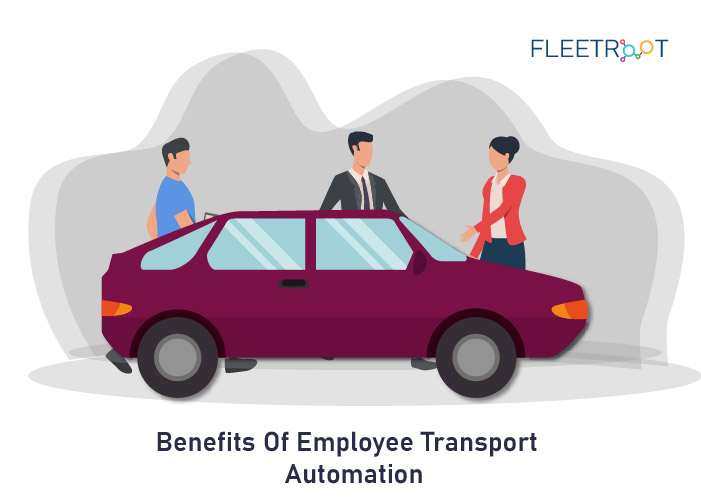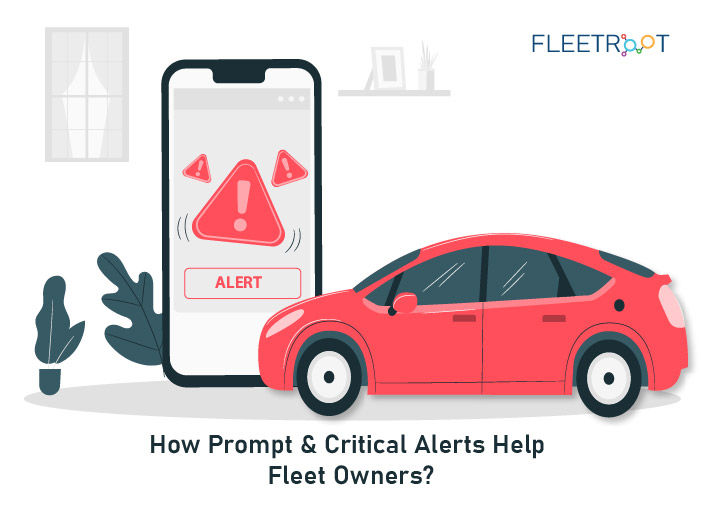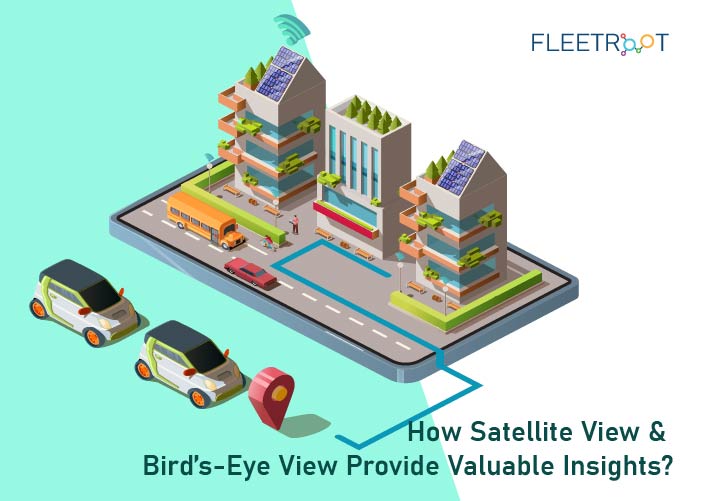We live in the Modern Age – of increased automation and everything digital. That is our World these days!
However, even in this world where everyone is in a race to automate their lives and businesses, there are several areas that are still either ignored, left behind or have no feasible solution. At least, not yet.
Till recently, one such area for companies was Employee Transport Automation using modern tech like a GPS tracking system.
Most firms still follow old methods using phone and paper notes. This creates several problems, including managing scale, multiple locations and varied work timings (shifts).
Suddenly, Management becomes confronted with burgeoning costs, revenue stagnation, lack of data & accountability. It firefights desperately via “band-aid” expenditures and efforts to keep employee transportation afloat. This, in turn, adds cost and reduces efficiency. It is a vicious downward spiral.
An Employee Transport Automation system using a GPS tracking system solves these very issues.
- A closed-loop system that enables end-2-end solutions for employee transportation
- It addresses transport issues including the demand-supply gap, safety issues, lack of technology and sets up a customized environment for all stakeholders (Managers, Employees, Drivers, Management) to connect seamlessly, and creates a controlled environment
- Using modern technologies such as IoT, Cloud SaaS (ie offering transport solutions as a “service”) AI, modern hardware (eg. hand-held devices vs expensive on-site systems), these firms can efficiently automate their workflow processes including MIS, Accounting, Employee Attendance and Scheduling, Vehicle Monitoring and Fleet Management to achieve significant advantages.
Leading benefits of employee transport automation using a GP tracking system are mentioned below:
1) Increased Employee Efficiency:
Resource efficiency is probably the leading benefit of automation. Not only does it achieve optimal Cost & Scheduling efficiencies, but also enables Management to maintain control over an area that is operationally intensive, challenging and often results in bottle-necks. Importantly, it frees up employee work-hours for other, often more important, tasks.
For example, managing a large employee transportation system for an organization that has multiple shifts, 24/7 operations, numerous pickup and drop-off locations, various classes of vehicles to cater to different employee levels while maintaining legal safety protocols would need a large and experienced team.
In such a situation, automation is not just “nice-to-have” but “must-have”. A transport automation system embedded with a GPS tracking system offers benefits such as fleet planning & deployment, tracking & monitoring, and accounting & invoicing. For the users, it conveniently feels like the ubiquitous “app-based taxi services” that everyone uses today.
2) Optimal Cost Management:
Manual transportation systems that used pen and paper led to increased cost at several levels of its operation. Traditional vehicle-services employed by corporates generally charged a flat fee (often very high sums) per employee trip. Costs were smoothened to avoid complex billing calculations.
However, this often resulted in firms paying a much higher fee if re-calculated at ‘cost-per-mile’ eg if employees lived close to the workplace.
Firstly, the nimbleness of an automated transport system embedded with a GPS tracking system allows companies to utilize customized models based on distances logged. Modern GPS tracking can track miles travelled by each vehicle. Thus, companies can calculate their costs accurately based on elements like distance, time, fuel-efficiency vs traffic (etc) and agree on commensurate rates of service with the vendor. This results in huge savings. Companies save upto 20% by matching Cost vs Distance travelled.
Secondly, automation allows for efficient fleet-planning via different route creations every day based on pickup & drop-off requests, vehicle grades, timing (etc). This allows for optimal vehicle occupancy and shaves another 5-10% of the cost.
Reduced manpower costs: Manpower costs are often the largest line item for companies and they must balance Resources vs Cost. Managers must reduce the amount of time that staff spends on low-value administrative work and replace it with automated systems.
Eliminate dry runs with effective utilization of vehicles: Fuel wastages are huge cost burdens, especially with excessive dry runs. Causes include faulty route planning, scheduling errors, drivers receiving trip-sheets from multiple points, poor optimization of vehicles, no intimation of employee absence (etc). An automated system eliminates this and allows effective vehicle utilization.
3) Cloud-hosted, Web-Application:
Modern GPS tracking systems are hosted on a “cloud” and can be accessed from anywhere. The Transport Manager manages all aspects since he has full control of the operations through the cloud-interface.
An operations dashboard provides a quick view of all trips and issues that need to be addressed. The Management dashboard provides a strategic view of operations and profitability analysis of the business.
4) Complete Coverage:
A GPS tracking system allows for complete coverage and mapping of the travel function. The travel control desk uses the Master Interface to manage bookings, group employees based on applicable rules and to track vehicles till employees have reached their destinations on-time and safely.
Deviations from pre-decided routes (emergency stops, unexpected delays) are flagged and tracked with special focus. Vehicles with only female passengers are tracked in greater detail. The better GPS tracking systems can customize their offerings based on individual client operations so that there aren’t any areas that aren’t mapped and monitored.
Daily data collected from trips completed, drivers, employees, and transport managers is mined to generate insight. This provides learning for continuous improvement, and, innovation.
5) OpEx vs CapEx:
A huge advantage of modern Cloud-based GPS tracking system is that it departs from CapEx heavy, legacy-based, heavy onsite systems. Clients are typically charged a monthly fee-per-license and can shift it to the monthly P&L to treat as a monthly OpEx expenditure as against heavy CapEx on the company balance sheet.
The money freed up can be deployed for other company activities.
6) Enhanced Safety of Employees:
Safety and security of employees is paramount for transport systems. Modern workplaces utilize multiple work shifts, 24/7 time cycles and increasingly hire women for myriad roles. Therefore, it becomes essential for companies to provide safe transit to employees.
A GPS tracking system has embedded panic buttons, fully networked software-based emergency alarms, real-time vehicle tracking, background verification, and number-masking so that employees and drivers do not need to share their numbers. Notifications to the Master Interface when employees board & alight safely are also enabled.
These features equip companies to maintain a safe transport system for their employees and develop a reputation of employee safety which helps the company to attract the desired workforce.
7) Monitoring Driver Behavior:
Transport Managers use advanced AI and Smartphone Sensors that are integrated into vehicles and driver phones to provide extensive information on driving patterns. This identifies risky driving, reduces accidents, keeps a check on insurance premiums, prevents staff downtime, ensures timely vehicle maintenance and enables necessary timely action.
Driver Profile: companies integrate driver profiles within such systems in order to access their information, provide feedback opportunity for employees to rate drivers and leave comments about their behavior and driving skills.
These options ensure employee satisfaction and employee safety. Companies with efficient transport services attract better quality of employees, thus, ultimately adding to company bottom line.
8) Increased Employee Productivity:
In addition to being cost-effective, an improved Employee Productivity rate is another benefit of an automated transport system with a GPS tracking system.
Poor route-planning and fleet management result in late arrivals, confusion and stress. This causes productivity loss, and is amplified in high-intensity, time-sensitive sectors eg IT, BPO. Additionally, longer travel times may lead to poor employee health and cause labor turnover.
Automated Routing and Scheduling engine: utilizing AI to identify and adjust to daily changes of traffic congestion, employee numbers, schedules (etc), vehicle routes and utilization is optimized to minimize travel time, maximize seat utilization, and maintain safety. This ultimately increases productivity and revenue. Efficient travel between home and office allows employees to enjoy the much desired “work-life balance” and motivates them to put in their best at work.
9) Maintaining Statutory Compliance:
Since Transport has historically been phone and paper based, issues like revenue leakages and corruption are common – however, since it is a fiercely audited corporate item, compliance is important. An automation tool digitizes the entire system, allows control at scale and stores data on a cloud.
The automated billing system allows easy data correction, compliance maintenance and error-free operation.
10) Insightful MIS:
A modern transport software embedded with GPS tracking system provides insightful analytical data toward maintaining the correct number of fleet vehicles, developing a safety culture, fuel management techniques, improving CSAT, adopting relevant policies and procedures to manage a sustainable & cost-effective fleet.
Therefore, key features in your GPS tracking system must include:
- Fully Automated
- Master Interface
- Auto Routing & Scheduling
- Live Tracking
- Live Analytics
- Customizable & Flexible
- Integration with Existing Systems (eg HRMS)
- E-trip Sheet
- Cost Optimization
- Instant Billing & Documentation
- MIS Reports
Conclusion:
In today’s globally competitive world, companies are under severe pressure to maintain Revenues & Costs. Thus, automating employee transport using a GPS tracking system allows them to manage costs and optimize employee work-hours. It is no longer a luxury, but, a critical requirement.
Check High Quality GPS Tracking Software



